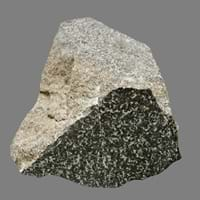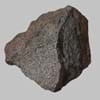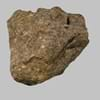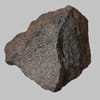Definition
Diabase is a fine-grained igneous rock which is composed mostly of pyroxene and feldspar
Diatomite is a fine-grained sedimentary rock which is formed from consolidated diatomaceous earth
Discoverer
Christian Leopold von Buch
Unknown
Etymology
From Greek di + base
From diatom + -ite1
Class
Igneous Rocks
Sedimentary Rocks
Sub-Class
Durable Rock, Hard Rock
Durable Rock, Soft Rock
Group
Volcanic
Not Applicable
Other Categories
Fine Grained Rock, Medium Grained Rock, Opaque Rock
Fine Grained Rock, Opaque Rock
Texture
Aphanitic, Granular
Clastic or Non-Clastic
Color
Dark Grey to Black
Grey, White, Yellow
Durability
Durable
Non-Durable
Appearance
Vesicular
Soft
Interior Uses
Countertops, Decorative Aggregates, Homes, Interior Decoration, Kitchens
Decorative Aggregates, Homes, Interior Decoration
Exterior Uses
As Building Stone, As Facing Stone, Paving Stone, Garden Decoration, Office Buildings
Garden Decoration, Paving Stone
Other Architectural Uses
Curbing
Curbing
Construction Industry
As Dimension Stone, Building houses or walls, Cement Manufacture, Construction Aggregate, for Road Aggregate
As Dimension Stone, Cement Manufacture, Construction Aggregate, for Road Aggregate, Landscaping, Making natural cement, Source of calcium
Medical Industry
Not Yet Used
Not Yet Used
Antiquity Uses
Artifacts, Monuments, Sculpture, Small Figurines
Artifacts
Commercial Uses
An Oil and Gas Reservoir, Cemetery Markers, Commemorative Tablets, Laboratory bench tops, Jewelry, Sea Defence, Tombstones
Alumina Refineries, Animal feed filler, As a Feed Additive for Livestock, Creating Artwork, Drawing on blackboards, Fire resistant, Gymnasts, athletes and mountain climbers use for grip, In aquifers, Soil Conditioner, To ignite fire, Used as a filter medium, Used as an insecticide, Whiting material in toothpaste, paint and paper
Types
Not Available
Not Available
Features
Smooth to touch
Clasts are smooth to touch, Is one of the oldest rock, Smooth to touch, Very fine grained rock
Archaeological Significance
Monuments
Used
Not Yet Used
Famous Monuments
Stonehenge in English county of Wiltshire
Not Applicable
Sculpture
Used
Not Yet Used
Famous Sculptures
Data Not Available
Not Applicable
Pictographs
Not Used
Used
Petroglyphs
Not Used
Used
Figurines
Used
Not Yet Used
Formation
Diabase forms when molten igneous rock is squeezed up into a vertical crack in other rocks, the crack is usually forced apart and the molten rock cools in the space to form a tabular igneous intrusion cutting across the surrounding rocks and is known as a dike.
Diatomite rock formed from the skeletal remains of single celled plants called diatoms. When diatoms die, their skeletal remains sink to the bottom of lakes and oceans etc. hence forming diatomite deposit.
Mineral Content
Augite, Chlorite, Olivine, Plagioclase, Pyroxene, Pyrrhotite, Serpentine
Calcite, Clay, Clay Minerals, Quartz, Sand
Compound Content
Aluminium Oxide, CaO, Chromium(III) Oxide, Iron(III) Oxide, Potassium Oxide, MgO, Sodium Oxide, Silicon Dioxide, Sulfur Trioxide
Ca, NaCl, CaO
Types of Metamorphism
Burial Metamorphism, Cataclastic Metamorphism, Contact Metamorphism, Regional Metamorphism
Not Applicable
Types of Weathering
Biological Weathering, Chemical Weathering
Biological Weathering, Chemical Weathering, Mechanical Weathering
Types of Erosion
Chemical Erosion, Coastal Erosion, Water Erosion
Chemical Erosion, Coastal Erosion, Wind Erosion
Grain Size
Fine to Medium Grained
Very fine-grained
Fracture
Conchoidal
Not Available
Porosity
Highly Porous
Highly Porous
Luster
Not Available
Dull
Compressive Strength
Not Available
Cleavage
Not Available
Non-Existent
Specific Gravity
2.86-2.87
2.3-2.4
Transparency
Opaque
Opaque
Density
2.7-3.3 g/cm3
2.49-2.51 g/cm3
Specific Heat Capacity
Not Available
Resistance
Heat Resistant, Impact Resistant, Pressure Resistant, Wear Resistant
Heat Resistant
Deposits in Eastern Continents
Asia
India
Brunei, India, Indonesia, Malaysia, Singapore, Thailand, Vietnam
Africa
South Africa, Tanzania
Cameroon, Chad, Ghana, Kenya, Malawi, Sudan, Tanzania, Togo, Zambia, Zimbabwe
Europe
Germany, Greece, Italy, Scotland, Turkey
England, France, Germany, Spain, United Kingdom
Others
Antarctica, Greenland
Not Yet Found
Deposits in Western Continents
North America
Canada, USA
Canada, USA
South America
Argentina, Brazil, Colombia, Venezuela
Colombia
Deposits in Oceania Continent
Australia
Central Australia, New Zealand, Queensland, Western Australia
Adelaide, New Zealand, Queensland, Tonga, Victoria, Yorke Peninsula
All about Diabase and Diatomite Properties
Know all about Diabase and Diatomite properties here. All properties of rocks are important as they define the type of rock and its application. Diabase belongs to Igneous Rocks while Diatomite belongs to Sedimentary Rocks.Texture of Diabase is Aphanitic, Granular whereas that of Diatomite is Clastic or Non-Clastic. Diabase appears Vesicular and Diatomite appears Soft. The luster of Diabase is not available while that of Diatomite is dull. Diabase is available in dark grey to black colors whereas Diatomite is available in grey, white, yellow colors. The commercial uses of Diabase are an oil and gas reservoir, cemetery markers, commemorative tablets, laboratory bench tops, jewelry, sea defence, tombstones and that of Diatomite are alumina refineries, animal feed filler, as a feed additive for livestock, creating artwork, drawing on blackboards, fire resistant, gymnasts, athletes and mountain climbers use for grip, in aquifers, soil conditioner, to ignite fire, used as a filter medium, used as an insecticide, whiting material in toothpaste, paint and paper.









